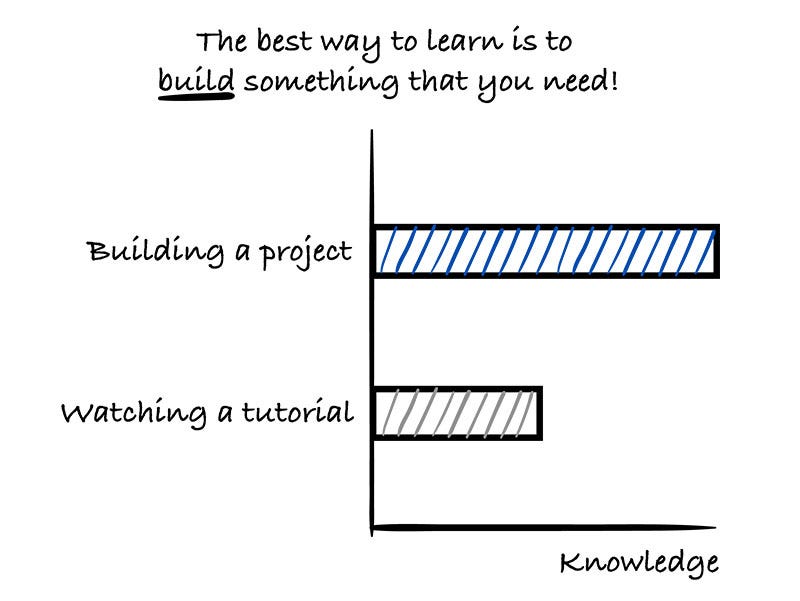Are you a feature factory worker?
Learn how to cut features like a boss, deal with feature factories and how to finally stop procrastinating.
The two top articles blend in nicely. The first one is about how to cut feature scope and keep most of the value, and the second one tells you how to deal with feature factories. Both have PMs as their audience and this is not often the case in ToT. As engineers, PMs are our “brothers in arms”, and we must work with them well. Both articles will help you understand PMs better and learn how to work with them effectively.
Read on 🖖
Less Is More: How to Cut Features Without Losing Impact (4 min)
Enginuity
More content on cutting scope! 😍 Engineers often accept enormous feature scope without questioning why it needs to be delivered and what value it will bring for users. Further, some even tend to delegate all decision-making on scope to be delivered to product managers. This mindset does not make teams successful and does not maximize their impact. We all know that engineers tend to be overly optimistic when estimating effort. However,
shares a critical insight as well - PMs are excessively optimistic when evaluating the value of a feature.This article will give you a simple, actionable framework you can use to fight these biases of everyone involved.
Audience: Software Engineers / Engineering Managers / Product Managers
Value: Learn why and how to cut scope
ToT Rating: ⭐⭐
How to Stop the Feature Factory (7 min) 💵
Hybrid Hacker
This is a paywalled article on how to deal with being in a feature factory. The article first gives you some indicators you can use to determine if you are in a feature factory. It then goes on to explain the impact new features have on your team’s capacity. This is best explained with this neat chart below 😍.
Audience: Engineering Managers / Software Engineers
Value: Learn the residual cost of features
ToT Rating: ⭐⭐
What High Performers Know About Doing Hard Things (X min)
The Caring Techie Newsletter
If you struggle with procrastination and especially with delaying hard but important tasks, this article is for you.
shares how plowing through hard tasks rewires your brain 🧠 and makes it stronger. She shares six tips high performers do to get through difficult tasks. However, just the fact that you learned that plowing through hard work will make your brain stronger should boost your motivation to get things done 💪.Audience: Software Engineers
Value: Learn the value of doing hard things
ToT Rating: ⭐⭐
Binstack: Making a maximal multi-dimensional decision (18 min)
A Smart Bear
Above, we mentioned the tendency of PMs to be excessively optimistic about the value of a feature. This article will not help PMs to determine the exact value of their features. However, it will give them a framework (nicknamed Binstack) for evaluating which features are most impactful. Additionally, it will force PMs to think about what “impactful” means right now at the current stage of their company/
Audience: Product Managers / Engineering Managers
Value: Learn how to determine the most impactful feature
ToT Rating: ⭐
5 AI tools to build to be a better Engineering Leader in 2025 (10 min)
Engineering Leadership
In this article
gives you five use cases for building your own AI agent that will help you both:“scratch your itch” and
learn about LLMs.
Audience: Engineering Managers
Value: Learn good use cases for building LLM tooling
ToT Rating: ⭐
One Hidden Skill That Makes You Thrive in Tech (Hint: It’s Not Coding) (4 min)
The True Engineer
Your coding skills are amazing. You design perfect, scalable, and neat systems. However, you still feel your career is stuck. Perhaps your non-technical skills are to blame? Every engineer operates in a sociotechnical system, and in such systems, the “socio” part matters a lot. Read about the value of social capital for engineers.
Audience: Software Engineers
Value: Learn why social capital is important for engineers
ToT Rating: ⭐
How To Convince Others That You Are Qualified and Ready To Lead (You Know You Are!) (6 min)
Wes Kao's Newsletter
This article talks about how framing your accomplishments in a way that will maximise perception of your leadership abilities.
shares three tactics you can use during your performance reviews or interviews for leadership positions. One sentence that resonated well with me is:Pivot your story from “how you execute given constraints” to “how you set constraints for others to do their best work”.
This one summarizes well the difference between an individual contributor and a manager.
As an IC, you are bounded by all kinds of constraints (slow CI/CD, siloed teams, lack of clear requirements, etc.), and you are then trying to make the best possible impact within your given constraints.
As a manager, you are the one responsible for tweaking the constraints in such a way so that your ICs can have the best possible impact.
Audience: Software Engineers
Value: Learn how to frame your leadership impact well
ToT Rating: ⭐
See you soon, rock on 🚀





